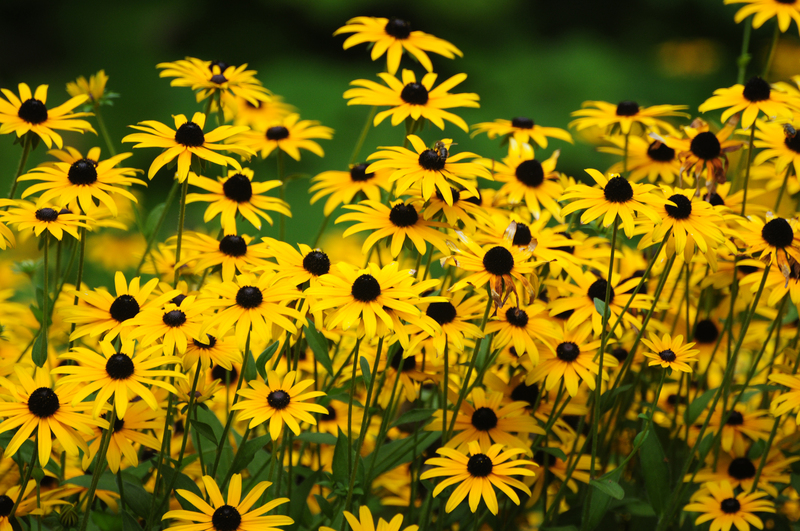Container Gardening 101: Tips for Growing Vegetables in Limited Spaces
Posted on 14/04/2024
Small living spaces or lack of a backyard should not prevent you from enjoying the satisfaction and health benefits of growing your own vegetables. Container gardening is the perfect solution for those with limited space, as it allows you to cultivate a bountiful vegetable garden in even the smallest of areas. In this article, we will provide tips and tricks for successful container gardening to help you get started on your journey towards homegrown produce.
What is Container Gardening?
Container gardening, also known as pot gardening, is the practice of growing plants in containers instead of planting them directly into the ground. This method is especially useful for those with small yards, balconies, or even just a window sill. With container gardening, you can grow a variety of fruits, vegetables and herbs right at home, without the need for a large garden plot.

Choosing Containers
When it comes to selecting containers for your vegetable garden, the options are endless. You can use anything from traditional clay pots to recycled items such as buckets or milk crates. The key is to choose containers that are deep enough to provide proper root growth and have good drainage holes to prevent water from accumulating.
It's also important to consider the material of the container. Plastic pots are lightweight and easy to move around, but they may not be as durable as clay pots. Terracotta pots, although heavier, provide better airflow and drainage for plants. Whichever material you choose, make sure it is suitable for outdoor use and has adequate drainage.
Selecting Vegetables
Not all vegetables are suitable for container gardening. It's best to stick with smaller varieties that do not require a lot of space for their roots to grow. Some great options include cherry tomatoes, lettuce, peppers, and herbs like basil and thyme.
Another factor to consider when choosing vegetables is their sunlight requirements. Most vegetables need at least six hours of sunlight per day, so place your containers in a sunny spot on your balcony or patio. However, if you have limited sun exposure, don't worry - there are plenty of vegetables that can thrive in partial shade, such as leafy greens and root vegetables.
Soil and Fertilizer
The key to successful container gardening is using the right soil and providing proper nourishment for your plants. It's important to use high-quality potting mix specifically designed for container gardening. These mixes provide good drainage and aeration for healthy root growth.
Unlike in-ground gardens, the soil in containers tends to deplete nutrients quicker. Therefore, it's essential to regularly fertilize your plants with organic fertilizers to keep them healthy and productive.
Watering
Proper watering is critical for container gardening. As the containers tend to dry out faster than ground soil, you need to check the moisture level regularly. The best way to determine if your plants need water is by sticking your finger about an inch deep into the soil - if it feels dry, then it's time to water.
It's also important not to overwater as this can lead to root rot and other issues. A good rule of thumb is to water deeply once or twice a week rather than lightly every day.
Pros and Cons of Container Gardening
There are several advantages to container gardening, including:
- Ability to grow vegetables in limited space
- Easy to maintain and move around
- Less weeding required
- Can extend the growing season by bringing pots indoors during colder months
However, there are also some downsides, such as:
- Limited plant variety compared to traditional gardening
- Pots may get heavy, making it difficult to move around
- Containers can dry out quickly, requiring frequent watering
Tips for Successful Container Gardening
- Choose appropriate containers with good drainage and adequate space for plant growth.
- Use high-quality potting mix and fertilize regularly to provide essential nutrients for your plants.
- Group together containers with similar sun and water requirements.
- Place saucers under pots to catch excess water and prevent staining on surfaces.
- Protect plants from extreme temperatures by moving them indoors during colder months or providing shade during hot summer days.

Takeaways
Container gardening is a versatile and efficient way to grow your own vegetables in limited spaces. By selecting the right containers, choosing suitable plants, and providing proper care, you can have a thriving vegetable garden right at your doorstep. Remember to regularly check moisture levels, provide adequate sunlight, and nourish your plants with organic fertilizers for the best results.
Conclusion
With these tips and tricks, you are now equipped to start your own container garden and enjoy the satisfaction of growing your own fresh produce. Don't let limited space hold you back - get creative and turn any corner of your home into a bountiful vegetable garden. Happy gardening!




